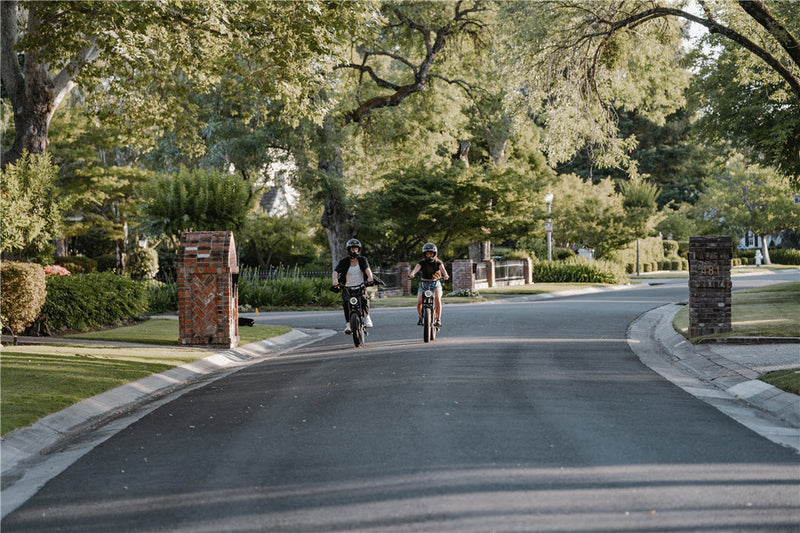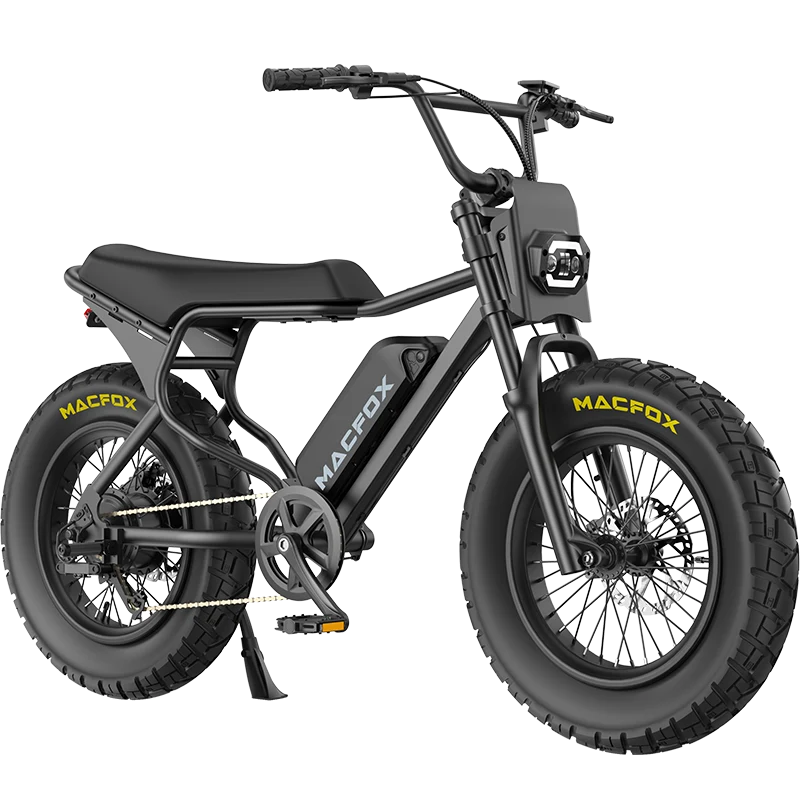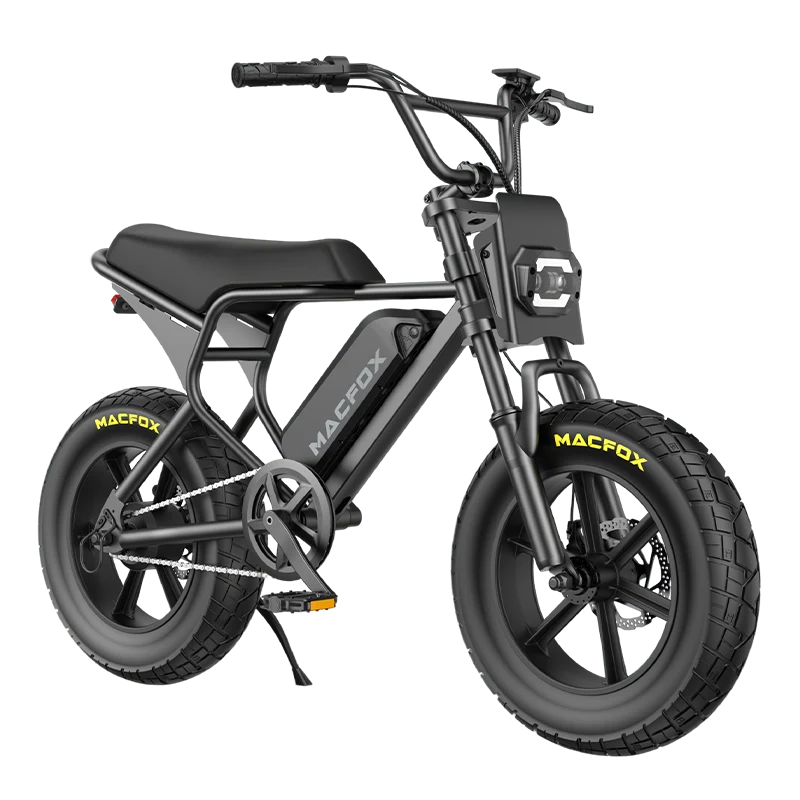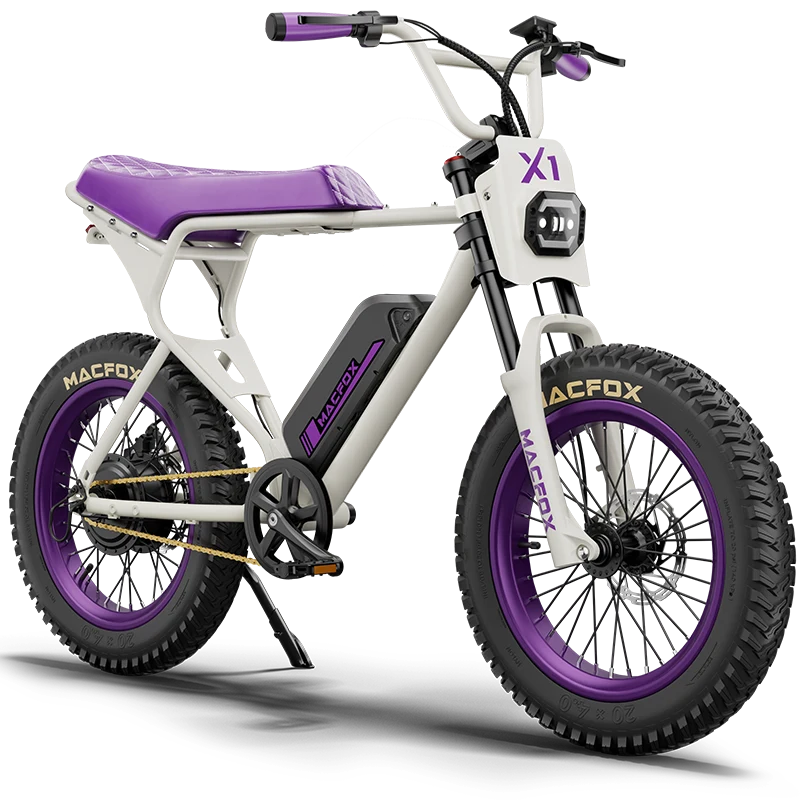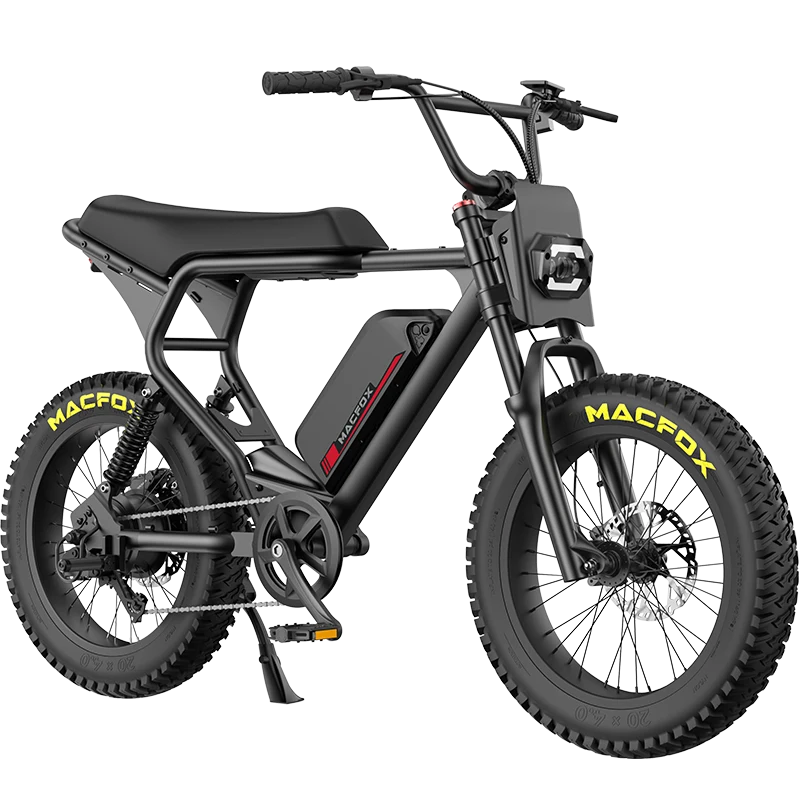As more people look for alternatives to traditional commuting, e-bikes have become a popular choice. A common question for those considering an e-bike for daily use is: Is a 40 km round-trip commute realistic? In this blog, we’ll explore the factors to consider when deciding if an e-bike can handle a 40 km round-trip commute, and how to make it work for you.
Understanding the Factors of a 40 km Round-Trip Commute
A 40 km round-trip commute is a substantial daily distance, especially in urban areas. When considering this on an e-bike, it’s crucial to account for the following elements:
-
Battery Range and Charging Infrastructure
-
Motor Power and Pedal Assist
-
Comfort and Suspension
-
Terrain and Weather Conditions
-
Rider Fitness and Riding Style
1. Battery Range and Charging Infrastructure
One of the most critical factors in determining if a 40 km round-trip commute is realistic is the e-bike’s battery range.
How far can you go on a single charge?
-
Average E-Bike Battery Range: Most modern e-bikes come with batteries ranging from 350Wh to 750Wh. This translates to a typical range of 30 to 80 km on a single charge, depending on battery size, assist levels, terrain, and the rider’s weight. If you’re looking at a 40 km round-trip, you’ll need a battery that can comfortably support 45-50 km of range to account for battery degradation over time and to handle a full-day commute.
What affects range?
-
Motor Power: More powerful motors draw more energy from the battery, but they also provide more assistance. E-bikes with motors between 500W and 750W tend to have a more substantial impact on the bike’s range. Higher wattage motors are ideal for longer commutes or inclines but will decrease the range slightly.
-
Terrain and Elevation: Riding on flat terrain will drain less power than riding up steep hills. On a 40 km round-trip, your daily route may involve varied terrain, and the motor will need to work harder to assist you on climbs, consuming more battery power.
-
Pedal Assist Levels: E-bikes come with adjustable assist levels that allow you to determine how much the motor contributes to your pedaling effort. Higher assist levels (usually for tougher terrain or longer distances) will drain your battery more quickly, while lower assist levels will conserve power.
Charging Options:
-
If your e-bike battery offers a range close to your commute distance, the ability to charge at work or along the route becomes vital. Look for workplaces or public spaces with charging stations or consider carrying a portable charger. Many e-bike riders also use charging stations at cafes or restaurants if available along their route.
2. Motor Power and Pedal Assist
The motor power and the pedal assist system will play a significant role in making a 40 km round-trip commute realistic.
Motor Power:
-
A 500W to 750W motor is typically recommended for daily commutes of 40 km. These motors provide a good balance of power and efficiency, handling both flat terrain and moderate inclines comfortably. More powerful motors are excellent for hilly terrain but consume more battery power.
Pedal Assist System:
-
Pedal assist works by giving you varying levels of motor assistance based on your pedaling effort. Most e-bikes have several assist levels, allowing you to conserve battery power on flatter terrain and engage more power for challenging uphill sections.
-
On a 40 km round-trip, using a lower assist level on flat terrain can help extend your battery’s range, while higher levels can be used for steep inclines. Finding the right balance between assist and manual pedaling will help maximize your range and make your commute more manageable.
3. Comfort and Suspension
A 40 km round-trip commute will demand comfort, especially on longer rides.
Suspension:
-
Full suspension bikes are ideal for absorbing shocks from rougher terrain, making them suitable for both urban and off-road commutes. Full suspension provides better comfort by reducing the impact on your body from uneven roads, potholes, or gravel paths.
-
The Macfox X2, for example, features full suspension, which is perfect for riders facing bumpy urban streets or more challenging trail sections. The shock-absorbing system will help reduce fatigue over long distances, improving your overall riding experience.
Saddle and Handlebar Adjustability:
-
A comfortable saddle and adjustable handlebars are critical for maintaining a good posture on long rides. Riders who spend 40 km on an e-bike daily will benefit from an ergonomic setup that minimizes strain on the back and wrists.

4. Terrain and Weather Conditions
The terrain you ride on will significantly impact the realism of a 40 km round-trip commute.
Terrain:
-
Flat terrain is the easiest to manage and will ensure that the e-bike’s motor and battery last longer. However, hilly terrain will drain the battery quicker and require more motor power to maintain the same speed.
-
Off-road conditions such as gravel paths or dirt trails demand higher traction and suspension. E-bikes designed for off-roading, such as the Macfox X2, are ideal because their fat tires and full suspension handle various surfaces more effectively.
Weather:
-
Cold weather can negatively affect battery performance, reducing the range. However, if your commute involves cold weather, your e-bike might need more frequent recharging.
-
Rain and wet conditions are also an important consideration, as they can affect safety and performance. Be sure your e-bike is weather-resistant and consider investing in waterproof gear for yourself.
5. Rider Fitness and Riding Style
While e-bikes make long commutes easier, they still require effort. Your fitness level and riding style will affect the feasibility of a 40 km round-trip commute.
Fitness Level:
-
E-bikes assist with pedaling, but they still require input from the rider. If you’re new to cycling, an e-bike can help you ease into long-distance commutes. However, regular cyclists with good fitness may find themselves relying more on the bike’s pedal-assist rather than maximum power.
Riding Style:
-
If you enjoy a more leisurely, relaxed ride, you can use lower assist levels and conserve battery life. For a faster pace, you may need higher assist levels or more motor power, which could reduce your overall range.
How to Make Your 40 km Round-Trip E-Bike Commute Work
-
Choose a bike with sufficient range: Ensure the e-bike you select has a range slightly higher than your daily commute to account for battery degradation over time and real-world conditions.
-
Charge at work: If possible, recharge your e-bike during the day to ensure you have enough power for the ride back home.
-
Use varying assist levels: Adjust your motor assist based on the terrain to maximize battery life.
-
Plan for maintenance: Regularly check tire pressure, brakes, and battery health to ensure smooth operation over long distances.
FAQs
What e-bike motor is ideal for a 40 km daily commute?
A 500W to 750W motor is recommended for a 40 km round-trip commute, especially if your route includes hills or varied terrain.
Will weather affect my e-bike’s performance on a 40 km commute?
Yes, cold weather can reduce battery efficiency by 10-20%, and wet conditions may affect traction. Make sure your e-bike is weather-resistant and dress appropriately.
Do I need a full suspension bike for a 40 km commute?
While not essential, a full suspension bike will improve comfort, especially if your commute includes rough or uneven terrain. It absorbs shocks, reducing fatigue on longer rides.
Conclusion: A 40 km Round-Trip Commute on an E-Bike is Realistic
A 40 km round-trip commute on an e-bike is absolutely feasible, provided you choose the right e-bike with the necessary battery range, motor power, and comfort features. With the right planning and regular maintenance, your e-bike commute can be a practical, efficient, and enjoyable way to cover long distances daily.
For commuters considering a long-distance ride, the Macfox X2 provides an excellent balance of comfort, power, and performance, making it a great option for those looking to commute 40 km daily.
Featured Articles:
- Is an Electric Bicycle the Best Way to Commute in the City? Here’s Why You Should Consider It!
- Best E-Bike for Commuting and Gravel: Comprehensive Review for 2025
- Best Urban Commuter Electric Bike: The Ultimate Guide for 2025
- Electric Bicycles with Long Range for Urban Use: Top Picks for 2025
- 2025 U.S. Commuting Trends: E-Bikes Lead Urban Mobility


